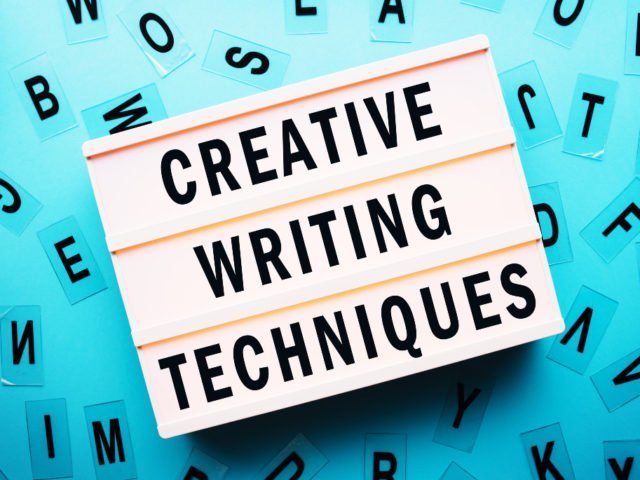One of the hardest things to gauge as writers is, perhaps, whether our writing is any good. Honestly, many published authors experience this too.
There is one thing we can do to ensure we keep improving though – refine our stories by using writing techniques.
In this article, we’ll go through different writing techniques, list writing technique examples, and note how we can use them to take our stories to a whole new level.
What Are Writing Techniques?
As authentic, racy, or tear-jerking as your plot might be, the storytelling comes down to every single sentence. The skilful execution of sentences and their syntax is called a writing technique. We can observe this skillfulness in the choice of tense for a scene or setting, point-of-view narrative, and other literary devices chosen by the writer.
Useful Writing Techniques To Enrich Your Work
Using writing techniques, consciously, makes our writing stronger. So, let’s look at some of the best techniques and writing styles we could adopt:
Playing With Time
Using time in certain ways can be very effective. It can involve literal time travel or just a travel in time, like a flash-forward or a flashback.
You could even use time to slow down a situation in the story, or speed it right up. This is often a well-handled technique in popular fiction. Take a look at this passage:
Hermione didn’t turn up for the next class and wasn’t seen all afternoon… Harry and Ron overheard Parvati Patil telling her friend Lavender that Hermione was crying in the girls’ bathroom and wanted to be left alone.
Harry Potter and the Philosopher’s Stone by J K Rowling
The passage of time here is not as important as the passage of that time in Hermione’s absence is. Time (a whole afternoon) has been squeezed in to drop in information that’s important later on in the story.

Point Of View Narratives
Every narrator is unreliable to some degree, because they’re human, even if fictional. Using POV narratives with multiple characters takes this human limitation to a whole other level. Naturally, it works very well in mysteries, thrillers, and crime fiction. Think The Da Vinci Code, Gone Girl, and The Girl On The Train.
Using various POV narratives is a good way to eliminate stagnation, especially if your plot is complex and your story is somewhat slow. George R R Martin does this in his mammoth fantasy novel series A Song Of Ice And Fire, popularly known as the Game Of Thrones television series.
Subversion Of Clichés
Every writer is bound to have fallen into the cliché sinkhole at one point or another – the mousy librarian, the girl in high heels, the good-looking chauvinist. Well, you know them. Nothing wrong with clichés, except sometimes they’re overdone and boring.
Lately though, one of the frontrunners in subverting clichés is Disney. In aiming to stay relevant for kids of the new generation, they’re now rich with a Cinderella who wants nothing but to design and sell dresses; a male fairy-godparent with an exquisite taste in fashion; Princess Merida (from the movie Brave) who runs wild, loves archery and couldn’t care less about princes; Princess Fiona who sacrifices her beauty to be with the love of her life – an ogre, Shrek; and Maleficent who becomes an adoptive mother (and true love) to Sleeping Beauty Aurora.
These subversions make for very satisfying stories retold for the current times. They add immense didactic value to a whole genre – fairytales.
Comparative Descriptions
We’re all fond of metaphors and similes, aren’t we? But it can get tiring to read the same old Her eyes were blue as the seas or Her words cut him like a knife in descriptive writing.
There’s a line from a debut novel When Dimple Met Rishi by author Sandhya Menon that has a descriptive writing style which is neither cliché nor purple:
His eyes reminded her of old apothecary bottles, deep brown, when the sunlight hit them and turned them almost amber.
When Dimple Met Rishi by Sandhya Menon
There are other kinds of comparative descriptions too: personification (Look at that sad bungalow; no one lives in it); pathetic fallacy (Even the sun gave up soon that day and by the time he reached home the sky was well and truly blue);and anthropomorphism where the personification is very literal (Pinocchio, the wooden boy that came to life).
Lyrical Writing
One of the things we might not often think about when we write is how the text sounds. This is important in all kinds of writing, from persuasive writing to narrative writing. Those with a flair for lyrical writing are able to create compelling prose, using sounds to great effect.
Using assonance (repeated vowel sounds), consonance (repeated consonant sounds), and alliteration can easily draw the reader’s attention. Here’s a passage from Harry Potter and the Order of the Phoenix, where Rowling uses consonance and alliteration to draw the reader’s focus toward Professor Umbridge’s speech:
“The Ministry of Magic has always considered the education of young witches and wizards to be of vital importance… There again, progress for progress‘s sake must be discouraged, for our tried and tested traditions often require no tinkering…”
Harry Potter and the Order of the Phoenix by J K Rowling
Funnily enough, most characters don’t pay much attention to it, even though we as readers can see, clearly, that Umbridge (on behalf of the Ministry) intends to meddle with the school’s affairs. It’s a clever usage of lyrical quality in expository writing to foreshadow the plot development.

Irony
The above scene, where readers are privy to Professor Umbridge’s true intentions, yet the characters are not, is an instance of dramatic irony.
Situational irony is another variation, where a character finds themselves in the exact opposite situation of what’s normal for, or expected of, them. There’s an episode in the popular 90s sitcom Friends, where Joey plays a neurosurgeon in a fictional television drama who then dies of brain damage.
Irony sure spices things up, be it for comedy or foreboding development, or in the above case, both.
Sensory Appeal
There’s a common tendency to describe a setting as the narrator sees it. Not including what they smell, hear, feel and taste can sometimes make the writing stale. All the text needs is a bit of varied sensory language.
There’s a passage from the bestselling thriller Gone Girl by Gillian Flynn that captures the first kiss of the protagonist and her husband with a literal, kind of sickening, sweetness:
As we turn the corner, the local bakery is getting its powdered sugar delivered… we can see nothing but the shadows of the deliverymen in the white, sweet cloud… Nick pulls me close and smiles that smile again, and he takes a single lock of my hair between two fingers and runs them all the way to the end, tugging twice, like he’s ringing a bell. His eyelashes are trimmed with powder, and before he leans in, he brushes the sugar from my lips so he can taste me.
Gone Girl by Gillian Flynn
Flynn has made use of the senses of taste and touch, to turn a kiss into something ominous. This is further pronounced by Flynn’s use of kinesthetic imagery in the phrases “turn the corner” and “like he’s ringing a bell”.
Suffice it to say that making use of these writing techniques consciously can bring about great results. Now, let’s look into a few ways in which you can use these writing styles in your own stories to develop good prose.

Useful Writing Techniques To Enrich Your Work
Foreshadowing
If you’d like to keep your reader hooked to your story, then, try foreshadowing to make the reader feel anxious for your character.
Multiple POVs
If your story is a family drama and rather slow, consider moving the plot along through multiple-character POV narrations.
Subvert Clichés
Why not try subverting the cliché of ‘happy endings’ in your romance? What if your protagonists decide that marriage is not for them, and instead explore how a platonic friendship is actually a better fit for them? The happy ending, then, is a healthy and mature friendship instead of the idealised marriage.
Try Something Unique
Let’s say you’d like to write a story on environmental pollution. What if you anthropomorphised water and detailed its struggle with contamination of various kinds?
Experiment
If your character is on the hunt for a killer, try sending them to a blues concert where the singer sings a song with alliteration in the lyrics, hiding clues. This can draw the reader’s attention while leaving your character clueless. That’s dramatic irony and lyrical writing in one go.
Use The Senses
If you need to describe mundane information, try drawing the reader into the intimate sensory perceptions of your character. It is a sure-shot way to hold the reader’s attention.
Frequently Asked Questions
What Are The 7 Writing Techniques?
The seven writing techniques are:
- Playing with time
- Point-of-view narratives
- Subversion of clichés
- Comparative descriptions
- Lyrical writing
- Irony
- Sensory appeal
What Is Good Writing?
If you put some time between the first edit and the final one, you can pay more attention to the creative writing techniques used and see how well they serve your story. Conscious self-editing of these writing styles is perhaps the closest measure of good writing.
Writing Techniques
Whether you’re looking for ways to enliven your writing style, or are keen to develop your writing skills, I hope this article has been helpful.
Experiment, have fun, and see what works for you!
Jericho Writers is a global membership group for writers, providing everything you need to get published. Keep up with our news, membership offers, and updates by signing up to our newsletter. For more writing articles, take a look at our blog page.











